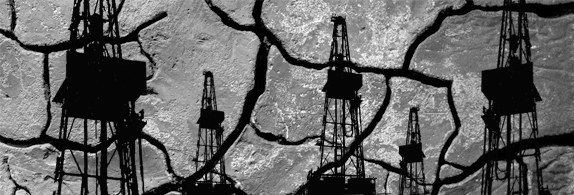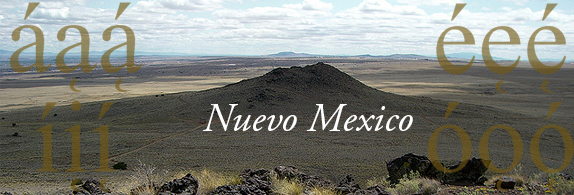Gila Dams and San Augustin Water

Harebrained schemes and whacky Rube Goldberg inventions far behind the times can seem like light-bulbs going off in the heads of dim-witted managers and politicians. You never dream they could come to pass but, alas, sometimes they actually do.
The New Mexico Interstate Stream Commission (ISC) late last month in Silver City voted 8 to 1, with one abstention, to dam and divert the Gila River, the last wild waterway in the state. Damming that river is a l930s idea and is utterly out of step with the needs and realities of the 21st century.
And there seems to be some vague chance that a new application to the New Mexico State Engineer, who amounts to the water czar in our state, could see the utterly madcap engineering pipe dream of annually shipping 54,000 acre feet of water from the San Augustin Ranch, near Datil in Catron County, 142 miles to Albuquerque and Rio Rancho, and perhaps even another 50 miles to Santa Fe.
When water gets moved around the state it’s usually taken from people with little power and little money and given to people with so much money and so much power they can get away with what eventually becomes “legal” theft or profiteering.
Such was almost the case in 2008 when five farmers around Fort Sumner filed an application with the State Engineer to sell water rights for about two billion gallons (or sixty-six hundred acre feet) to Santa Fe and other cities and convey it through a pipe line 150 miles long.
The Editorial Board at the Roswell Daily Record hit the roof with an editorial called “Draining Our Future.” The Daily Record had this to say: “Should this pipeline be built, what’s to stop a second one from being set up alongside it? A third? Why not 20? With 150 miles of pipe already in place, why not tack on another 80 miles and start pulling water out from under Roswell?” The editorial went on saying “if a city populated with affluent and influential residents finds itself in danger of running out of water and that city has the means to get it elsewhere, that’s very bad news for people living in that elsewhere.”
The Daily Record’s kicker read: “Eastern New Mexico is an arid region which has managed to grow only through careful management of its water. It would be a travesty if all that progress were to be lost because the other side of the state is unable to similarly manage its water and then plunders ours.” (The Orphaned Land, pgs. 227-28)
As far as I know that plan was scotched despite Citibank backing at least part of the pipeline. But the same argument the Daily Record made could be leveled at the Gila diversion project and the San Augustin Ranch proposal.
Although the ISC approved the Gila diversion scheme, it could take years for the engineering to come on line. Federal money for diversions and other water projects was made available to New Mexico in excess of $60 million, and possibly double that by some estimates, through the Arizona 2004 Water Settlement Act. Diversion plans, still vague and indefinite, have caused a raging controversy for almost a decade. Some contend that the ultimate cost could run $500 million to $1 billion.
With potential law suits, a bust in oil and gas tax revenue and the probability of bureaucratic snafus and complicated environmental impact statements, it’s possible that the Gila diversion project could be in limbo through the end of the Martinez administration’s second term. With a different governor comes a different composition of the ISC and perhaps different water priorities altogether. The project has already cost the state some $7 million in research and proposals. With less revenue from oil and gas it’s unlikely that the NM House will recommend more expenditures any time soon on a project so expensive that the Federal government will cover, conceivably, far less than a sixth of the total costs.
Opponents of the Gila diversion say that the over $60 million in federal funds released by the Arizona Water Settlement Act do not have to be spent on water diversion projects but could be used by smaller towns and agricultural counties in the area to build new sustainable water infrastructure including gray water and black water retrieval and treatment systems. Opponents have also contended that if diversion projects with reservoirs were constructed it’s possible that with climate change there could be no water to fill them. Some have said that with increased heating, evaporation might make reservoir storage obsolete.
The San Augustin Ranch water project is even more fantastic and potentially more dangerous than the Gila Diversion proposal. It’s really a classic case of taking water from rural, less powerful people and selling it to more powerful urban people.
The proposal has ranchers, county officials, land holders, and even scientists at the Very Large Array up in arms in Catron, Sierra, and Soccoro counties. They see it as writer Jack Loeffler sees it as a “water heist.”
It’s made all the more egregious because the San Augustin Ranch LLC is owned, as far as anyone can tell, principally by New Yorkers. And there’s some indication that the aquifer under the Plains of San Augustin is hydrologically connected to both the Rio Grande Basin and the Gila River.
This connection renders the pipeline proposal ludicrous as it would amount to selling Albuquerque and Rio Rancho water from its own aquifer, and could well jeopardize the already dicey and monstrously expensive Gila Diversion proposal.
And, of course, there is utterly no mention anywhere in the San Augustin Ranch’s glowing PR how much that water might cost and what it could do to water bills up and down the Middle Rio Grande Valley. The San Augustin Ranch had an earlier proposal to pipe water to Elephant Butte to shore up New Mexico water delivery to Texas and give local farmers some surplus water to work with. The State Engineer rejected that idea as being too vague.
The longer and deeper this “new normal” drought becomes, it’s likely we’ll see crazier and ever more desperate new water schemes pop up. It’ll be a great show but a dangerous one. As we see with the Gila River diversion, crazy does not mean out of the question any more.
Fracking and Drought

At some point before 2020 the financial markets, the insurance industry, and perhaps even the mainstream media will start making the connection between climate change, drought in the American Southwest, and fossil fuels -- their exploration, production, and use.
They will, in effect, be catching up with Mora County, San Miguel County, and the city of Las Vegas in New Mexico that have banned or placed moratoria on fracking for oil and gas in their jurisdictions.
A potent photo essay by Jonathan Waterman published late last month by the National Geographic titled “Record Drought Reveals Stunning Changes Along Colorado River” makes it terribly, and I do mean terribly, clear what fossil fuel driven climate change is doing to us and the land and water we depend on.
As Waterman writes “Half full, the amazing vessel that is Lake Powell has lost 4.4 trillions of gallons of water in the recent drought.” He continues by saying that “officials are now predicting rationing by 2017 for junior Colorado River water rights holders of Nevada and Arizona.”
A photograph of Lake Powell with its immensely high “bathtub ring” makes one shudder to look at it.
With this October being the hottest around the world since records first started to be kept about 130 years ago, the decisions over the last several years by Mora County, San Miguel County, and the city of Las Vegas’s to block hydraulic fracturing are courageous and pioneering moves.
It puts all three northern New Mexico political jurisdictions in the forefront in the battle to preserve the drinkability of groundwater from the depredations of fracking while engaging in the struggle against climate change. All three entities see the connection between fossil fuel extraction and use and the drought that’s plaguing New Mexico, the southern Rockies, and the whole Southwest.
Those National Geographic photographs of “stunning changes” along the Colorado River are directly related to oil and gas production and use. And fracking technology is tightening the grip of oil and gas on the world economy.
While Mora County battles with oil producers in Federal Court over the constitutionality of its fracking ban imposed in 2013, in adjacent San Miguel County the Commission, in a unanimous vote last month, imposed what the Associated Press has called “some of the strictest requirements on hydrocarbon exploration in the country.”
San Miguel County has restricted oil and gas development to open range land on the eastern side of the county about 60 miles from the county seat of Las Vegas.
The Albuquerque Journal called Mora and San Miguel “NM’s nimby counties” (Not In My Back Yard counties), as if self-determination and self-government were political sins, as if looking out for the cleanliness of your water supply was somehow disloyal to the “free market.” The editorial floated the idea that if you don’t support oil and gas exploration perhaps you shouldn’t use the stuff at all, and go cold in the winter. The Journal speaks with an urban, conservative, extractive industry bias that tends to see rural New Mexico and the world of small farmers and ranchers as inherently backward. And if you live in Las Vegas, and other parts of San Miguel County, you’ve been experiencing hard drought and water rationing for years and know your city can’t afford any contamination of its dwindling water supply.
What Mora and San Miguel Counties and the city of Las Vegas have done is bear the brunt of the first substantive assault against the global power structure of the carbon fuel industry as it attempts to sink itself into every non-resistant environment it can find. These small, relatively impoverished, political entities are showing the way for the future of a legal, elective and democratic anti-hydrocarbon revolution.
WWLNM—A Polylingual Place

It always makes me laugh when English only hardliners in New Mexico equate education, sophistication, and employability with being monolingual. How can a monolingual person possibly be “better educated” than a person fluent in two or more languages? It just doesn’t compute.
One of New Mexico’s great assets is its multilingual character. While it is not officially bilingual anymore, unlike Hawaii which still is (English and Polynesian-Hawaiian), the New Mexico constitution of l912 did mandate a bilingual Spanish-English government. Since the l950s all laws have not been published in Spanish and English. So while the state may be constitutionally bilingual it is not so in practice.
The 2000 U.S. census claimed that almost 30 percent of New Mexicans speak New Mexico Spanish at home. It’s an elegant, possibly l7th century, form of Castilian Spanish.
So two European languages exist side by side and are often entwined in New Mexico. But there are more, many more, languages that are alive and evolving in our state.
The 19 New Mexico Pueblos speak five distinct languages. Acoma, Leguna, Santa Ana, Zia, Santo Domingo (or Kewa), Cochiti and San Felipe all speak Keres. San Illdefonso, Santa Clara, Nambe, Pojoaque, Tesuque and Ohkay Owingeh speak Tewa.
Tiwa is spoken at Isleta, Sandia, Picuris, and Taos. Jemez (or Walatowa) is the only Pueblo whose people speak Towa. And Zuni is only spoken at Zuni. The Hopi pueblos in Arizona speak Hopi.
So if you add Tiwa, Towa, Tewa, Zuni and Keresan to English and Spanish, you have seven living languages in New Mexico. But that’s not all. Navajos speak their own form of Southern Athabaskan. Apaches in New Mexico speak at least two languages, Chiricahua and Mescalero. You could add Lipan, Kiowa, and Jicarilla to the list, though some would disagree. That makes ten or possibly thirteen living and evolving languages spoken in our state. This does not, of course, include Chinese, Vietnamese, Thai, Laotian, Korean, and others from around the world.
If you were doing business in New Mexico in the 18th and l9th centuries, you’d have to be passingly fluent in most native and old world languages. Native traders probably had to speak all Pueblo and Navajo languages and then also learn English and Spanish after the conquest.
If the Sapir-Whorf hypothesis is true and linguistic relativity is a reality, then the multiple languages of New Mexico each gives their speakers a distinct way of thinking about and describing the world. Anthropologists Edward Sapir and Benjamin Whorf both held that language molds our recognition of reality and either determines or strongly influences thought and what’s known as “world view” or an overall perspective on how life and the world deeply seem to be.
If this is so then New Mexico’s multilingual nature enriches us all with multiple versions of reality. They influence us not because we can become fluent in native languages or even New Mexico Spanish, if that’s not our first language, but because we meet and interact with people whose world views differ from our own. And these world views influence behavior, sociability, and human connection.
That’s just one reason why the New Mexico experience is so incalculably rich in variety and meaning. And why it is so mind-expanding and heart-opening to live here.
(Photos: Whirlpool by Gordon Wrigley / CC; Cracked earth by Filipppo Diotalevi / CC; Volcano by Matt Mordfin / CC)




Responses to “Provincial Matters, 12-8-2014”